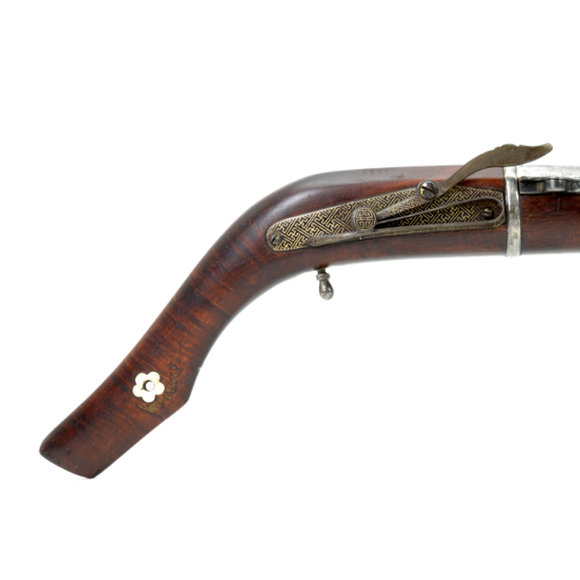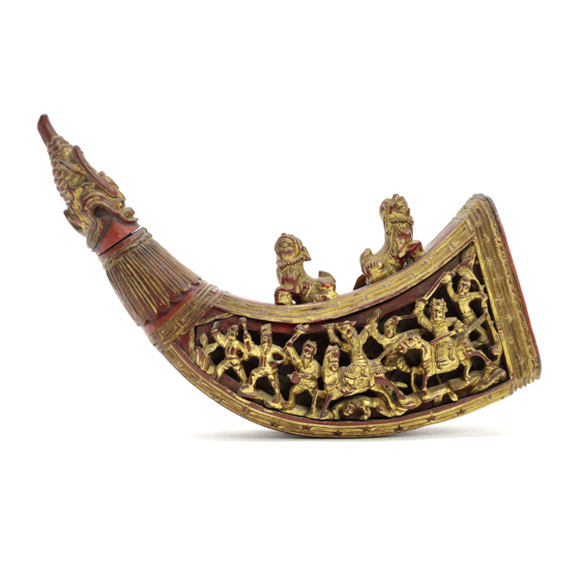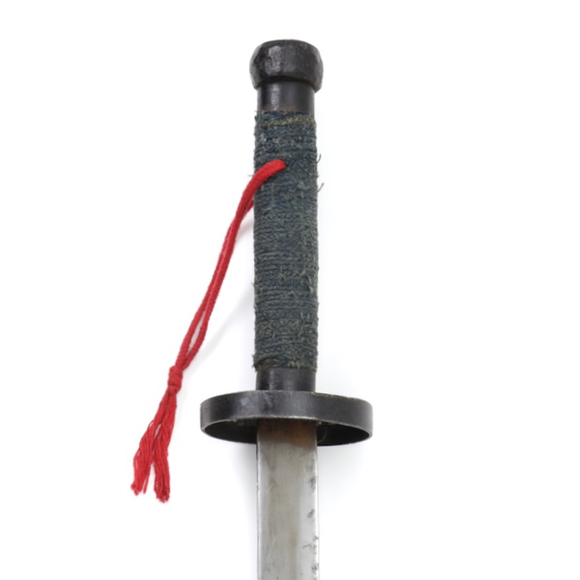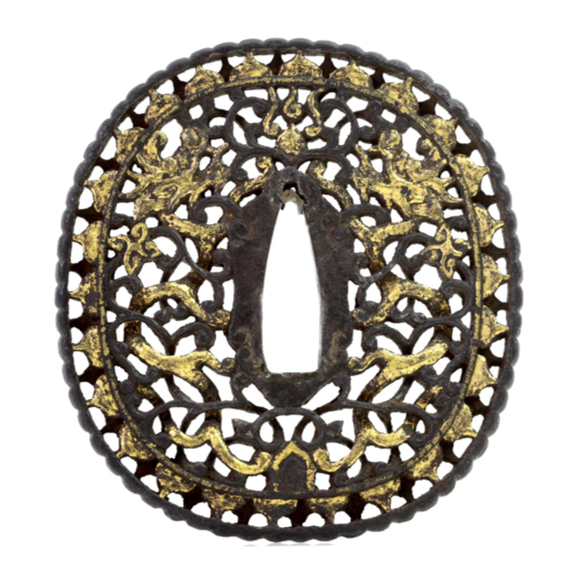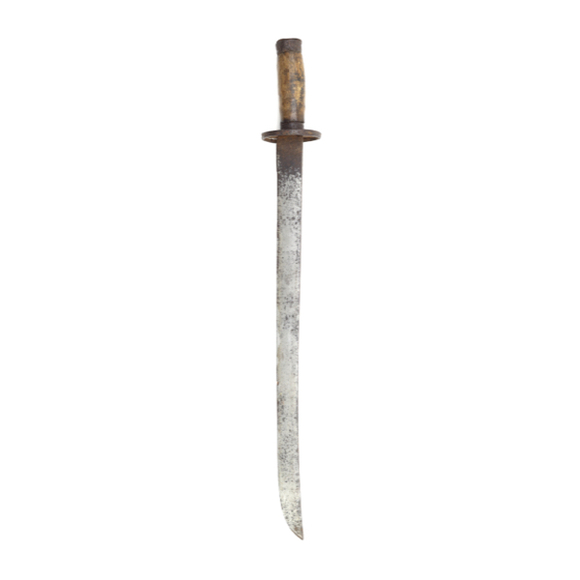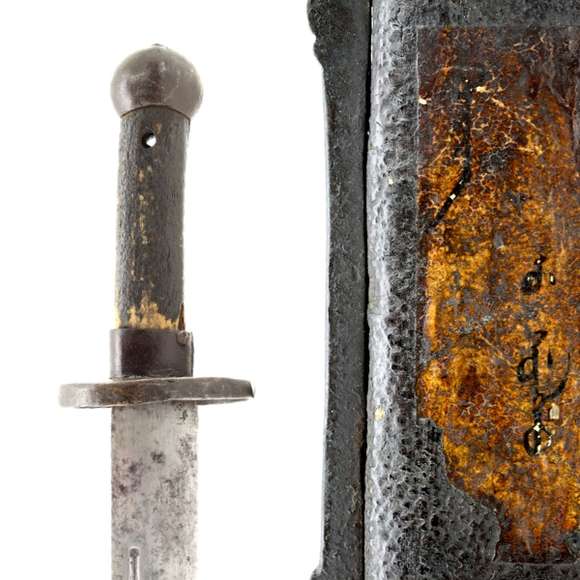With a golden damascened lock of the Indo-Portuguese type.

80.6 cm
65.6 cm
Base 5.6 mm
Center 5.3 mm
5 cm from tip 3.6 mm
Base 30 mm
Center 28 mm
5 cm from tip 22.5 mm
742 grams
14.6 cm
(to handle side of guard)
Iron, steel, wood, brass
Qing dynasty, China
19th century
From a Chinese private collection
Introduction
A Chinese straightsword, of simple build, probably made to arm local militias called tuánliàn (團練), "assemble and practice." These militias consisted of able-bodied men who were to gather and practice regularly to prepare them for the defense of their towns and villages in times of peril.
The organization and leadership over these militias was in some cases in the hands of the local gentry, the literary elite whose sword was the jiàn. This explains why in times of great social upheaval in China, like the rise and fall of dynasties, considerable numbers of practical fighting jiàn were produced for militia trained by jiàn wielders and not military saber instructors.
These rural militias played a vital part in protecting commoners during the Taiping Rebellion of 1850 to 1864.
This example
A charming example. It has a straight, double-edged blade of typical late Qing style. Blade pitted but here and there we can see signs of straight grain forging pattern. Other than the surface corrosion the blade is structurally healthy.
The hilt consists of an iron guard and pommel, and two wooden grip scales secured to the tang with metal pins. The is guard made of iron plates, brazed together, in the rough shape of a flower.
Some play to guard and pommel because the wood of the hilt shrunk over time.












Probably of Southern origin, with a straight blade and flaring tip.
In the style of northern work of the 16th and 17th centuries
A simple utilitarian weapon, probably made for rural martial artists or militia.
A standard pattern Qing military saber, but with the rare addition of a label in Manchu.

